Is it possible or not to eat beets in type 2 diabetes: pros and cons, restrictions on use
Type 2 diabetes is most common in older people. It sounds like a sentence: yesterday you could eat anything, but today the doctor prescribes a strict diet. Does this mean that now you can not eat anything sweet?
Beetroot, a favorite vegetable, also has a sweet taste. Is it really contraindicated in type 2 diabetes too? Let's see if it is possible or not to eat a root crop with this disease.
The content of the article
Beets in the diet for type 2 diabetes
When diagnosing type 2 diabetes mellitus, doctors first prescribe a fairly strict diet to the patient. It is difficult, because overnight you have to give up the usual tasty and favorite dishes.
In fact, it turns out that there are not so many products that are categorically forbidden for a patient with diabetes. The main thing is to know when to stop, to calculate grain units and not to forget about the prescribed medications (tablets or injections).
Beetroot is not a forbidden food, but there are some nuances of its use and limitations, which must be carefully read and not forgotten. It turns out that this vegetable can even be used to treat type 2 diabetes.
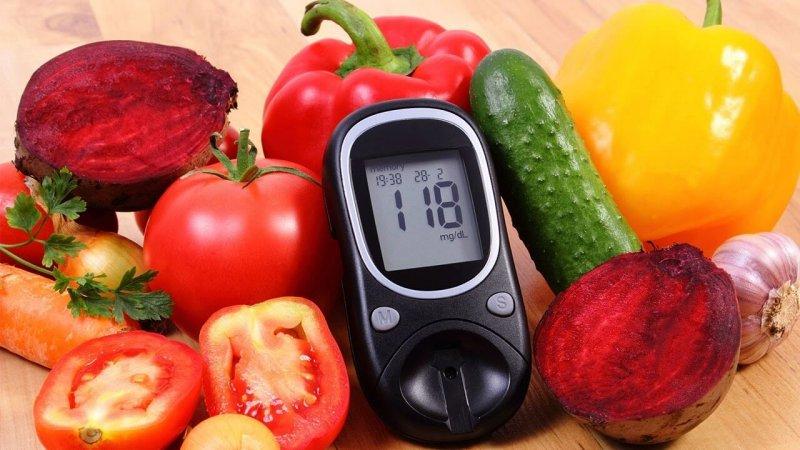
Benefit and harm
Among vegetables, beets are among the leaders in terms of beneficial properties. It removes toxins, heavy metal salts and radionuclides from the body, strengthens the walls of blood vessels, and improves the functioning of the digestive system.
The vegetable contains a huge amount of vitamins, minerals, macro- and microelements. In addition, beets give the body strength and energy, increase efficiency and relieve hangovers.
The root vegetable has a strong laxative effect, it use for weight loss... Doctors advise pregnant women to include the vegetable in their diet. Also, beets help to cope with menstrual irregularities, menopause and mastopathy. For men, it is useful in that it increases their sexual activity.
A separate list of useful properties has beet juice... They use it in a mixture with the juices of other vegetables, fruits and herbs. Everyone can find a recipe for a mix that will help achieve the desired effect.
Beetroot and its juice help in the treatment of a wide variety of diseases. These include oncology, angina, runny nose, anemia, hypertension, asthma, cataracts, hormonal imbalances, macular degeneration and constipation.
Despite such an abundance of useful properties, beets can cause harm to the body... This is due to the fact that it contains a large amount of fiber and glucose, and it also has a diuretic and laxative effect.
If you know and follow all the restrictions and contraindications, the use of this vegetable will not negatively affect your health, but will only give a positive result.
Composition and glycemic index
The composition of beets can be called truly rich. In addition to vitamins A, B1, B2, B4, B5, B6, B9, C, E, K and PP, the vegetable contains betaine and beta-carotene, as well as potassium, calcium, magnesium, sodium, phosphorus, iron, manganese, copper , selenium and zinc.
The nutritional value of raw and cooked beets varies slightly. 100 g of raw vegetable contains 1.6 g of protein, 0.2 g of fat and 9.6 g of carbohydrates. Energy value - 43 kcal. 100 g of boiled vegetables contains 1.7 g of proteins, 0.2 g of fat and 10 g of carbohydrates. Energy value - 44 kcal.
However, the glycemic index of boiled beets is twice that of raw beets. The glycemic index is a measure of a food's ability to raise blood sugar levels. For patients with diabetes, all foods are conventionally divided into three zones: green, yellow and red - depending on the glycemic index.
Important! The higher the glycemic index, the more and more sharply the consumed product raises sugar, which means, the more harmful it is for a diabetic.
As for beets, its raw glycemic index is 30, while in boiled it is 65. Thus, raw beets enter the "green" zone, they are broken down in the body slowly and practically does not cause jumps in blood sugar.
Boiled beets are at the very top of the "yellow" zone (since foods with a glycemic index of 70 and above fall into the "red" zone). It breaks down in the body much faster than raw and can cause a spike in blood sugar levels.
It's obvious that diabetics are healthier and safer to eat raw beets than boiled beets... This is especially important in type 1 diabetes.
For people with type 2 diabetes, the diet is more gentle, so sometimes they can afford a little boiled beets. The main thing is to know the measure and remember about its high glycemic index.
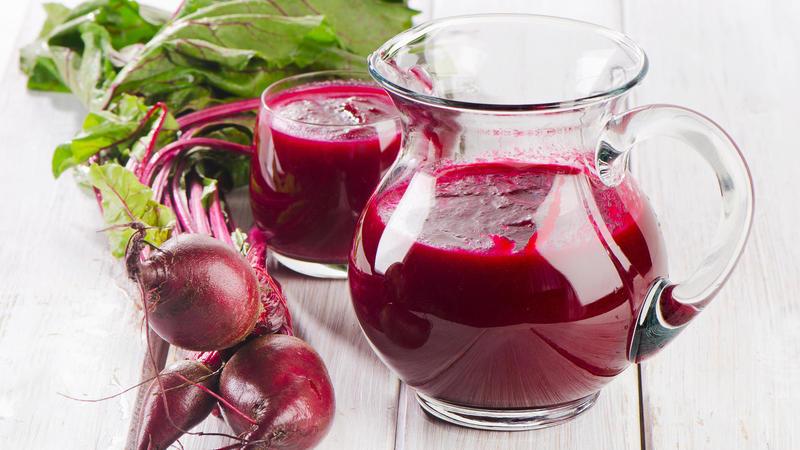
Does sugar increase
Based on the indicators of the glycemic index of raw and boiled beets, we conclude: raw vegetables almost do not raise sugar and will definitely not cause a sharp jump.
The same cannot be said about a boiled root vegetable. Diabetics need to use it with great care. The glycemic index of the vegetable is 65, which indicates the ability of boiled beets to dramatically raise blood sugar levels.
Rules for the use of beets
Patients with diabetes mellitus know firsthand that it is necessary to use any product correctly so as not to harm their body. This also applies to beets.
Let's take a look at the three most common uses for this vegetable: raw, cooked, and juice.
Raw
Raw beets have a low glycemic index, which means they can be included in the diet of a diabetic. It contains more useful elements that disappear during heat treatment.
At the same time, fresh beets have a stronger effect on the body, excessive consumption of a vegetable in its raw form will cause it even more harm than, for example, boiled. Therefore, you should carefully consider the contraindications and restrictions regarding the inclusion of fresh beets in the diet.
The diet for people with type 2 diabetes is not as harsh as for insulin-dependent diabetics. Doctors recommend eating no more than 70 g of raw vegetables per day for type 1 diabetes, and no more than 150 g for type 2 diabetes.
Boiled
Although the glycemic index of boiled beets is higher than raw beets, the restrictions on its use in type 2 diabetes are about the same: up to 100-120 g per day. But type 1 diabetics should use this vegetable cooked as little as possible.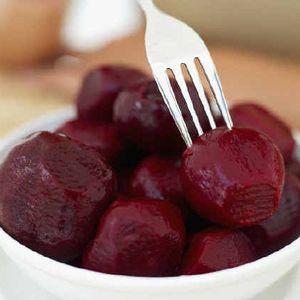
There are various ways to reduce the risk of a sugar spike when adding cooked root vegetables to your food.
For example, you can remove boiled potatoes from a vinaigrette recipe, then the dish will contain fewer bread units and not so significantly affect the blood sugar level.
Cooking borscht without potatoes and with the addition of lean meat (not fatty) will also eliminate the risk of side effects when used by diabetics.
Adding such dishes to the diet will help not only to level and control blood sugar levels, but also to maintain normal weight. Indeed, often with type 2 diabetes, people begin to gain weight, it becomes more difficult for them to keep themselves in shape.
Beet juice
The beneficial properties of beetroot juice are especially appreciated: it is able to cure sore throat and runny nose, save from heartburn and hangover, help in the treatment of oncology, hypertension and liver diseases.
Beetroot juice is also beneficial for type 2 diabetics.It is believed to have an anticonvulsant effect, as well as increase hemoglobin levels and cleanse the walls of blood vessels.
At the same time, of course, you need to be very careful in the preparation and use of this drink. There are two ways to make beetroot juice. The easiest one is with a juicer. If there is none in the kitchen, you will have to use the second method. We take cheesecloth, grater, strong and bright root vegetable. We wash and clean the vegetable, cut into plates, grind on a grater and squeeze through cheesecloth.
Important! We must put the resulting juice in the refrigerator for two hours: you cannot drink it freshly squeezed!
For people with type 2 diabetes, there are several rules for drinking beetroot juice: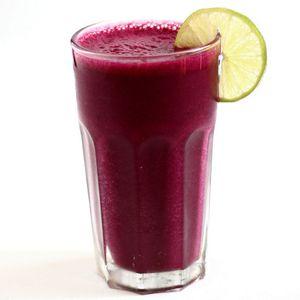
- After insisting, it is recommended remove the foam and pour the drink into another container without sediment.
- The daily intake of juice for diabetics is up to 200 ml. You can drink a maximum of 50 ml at a time. Therefore, you should divide the intake of beet juice into at least four approaches during the day.
- You need to introduce the drink into the diet gradually. Start with 1 tsp. per approach and every day slightly increase the portion until you reach the required 50 ml.
The amount and frequency of use
It is impossible to fight type 2 diabetes without a specific diet. Even if it is not as strict as in type 1 diabetes, it is still necessary to know the measure when using any product.
As already mentioned, doctors recommend type 2 diabetics to eat no more than 150 g of raw beets per day, 100-120 g of boiled and drink no more than 200 ml of beet juice (divided into four doses of 50 ml). In type 1 diabetes, these dosages should be reduced by about half.
As for the frequency of consumption of beets by diabetics, the recommendations of doctors here also differ depending on the type of disease. Insulin-dependent diabetics should eat beets as little as possible, while very closely monitoring the body's response.
Type 2 diabetes is much better. Doctors allow beets to be included in the daily diet, while observing the above restrictions very carefully.
Besides raising blood sugar levels, beets have many other side effects. Read the restrictions and contraindications carefully before eating any form of red root vegetable.
Contraindications
Often among the contraindications to the use of beets, diabetes mellitus can be noticed. But we have already figured out that you do not need to completely deprive yourself of a red vegetable. It is enough just to follow the measure prescribed by endocrinologists. What about the rest of the contraindications?
Beets (especially raw) should not be used for gastritis and urolithiasis, as well as for other kidney diseases... Due to the strong laxative effect, beets are contraindicated in people with chronic diarrhea, duodenal ulcer and other intestinal diseases.
The increased acidity of the stomach does not allow adding a raw vegetable to food, but it can be replaced with a boiled one. Obviously, even with individual intolerance to the components of a red root vegetable, it should not be used in any case.
Tips & Tricks
It is best for type 2 diabetes to consume beets in dietary meals. Below are the recipes for some of them.
Cabbage and beet salad
Ingredients: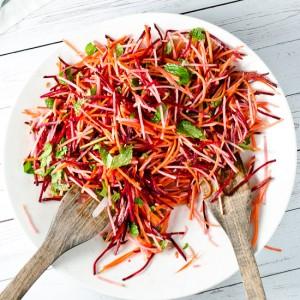
- cabbage, 150 g;
- beets, 1 pc.;
- vegetable oil, 10 g;
- salt;
- xylitol;
- lemon acid.
Chop the cabbage, salt it and squeeze the juice. Add finely grated boiled beets. We dilute citric acid with a small amount of water. Season the salad with a mixture of vegetable oil diluted with citric acid and xylitol.
Beetroot, cucumber and horseradish snack
Ingredients:
- cucumber, 1 pc.;
- beets, 1 pc.;
- horseradish, 10 g;
- sour cream, 10 g;
- greenery.
Cut the cucumber in half and cut the pulp out of it. Rub the beets on a fine grater, mix with cucumber pulp and horseradish.We spread the resulting mixture on cucumber halves, pour sour cream and add greens.
Beetroot
Ingredients:
- beet broth, 0.5 l;
- beets, 1 pc.;
- cucumber, 1 pc.;
- potatoes, 2 pcs.;
- egg, 1 pc .;
- sour cream;
- salt;
- lemon acid;
- xylitol;
- greenery.
Cool the beet broth, bake the beets. Grind herbs (parsley, dill, onion), potatoes, cucumber and baked beets. We fill the resulting mixture with sour cream, citric acid and xylitol. Add the ingredients to the chilled broth and salt to taste.
Conclusion
Despite the widespread belief that diabetics cannot eat beets, you should not get upset ahead of time. It turns out that with this disease, you can eat the red root vegetable. And with type 2 diabetes, doctors even allow it to be included in the daily diet.
The main thing is to carefully study the restrictions, contraindications and daily intake of this vegetable. There are also a variety of side effects that raw, cooked beets and beet juice can cause. Before including a vegetable in your diet, consult an endocrinologist.